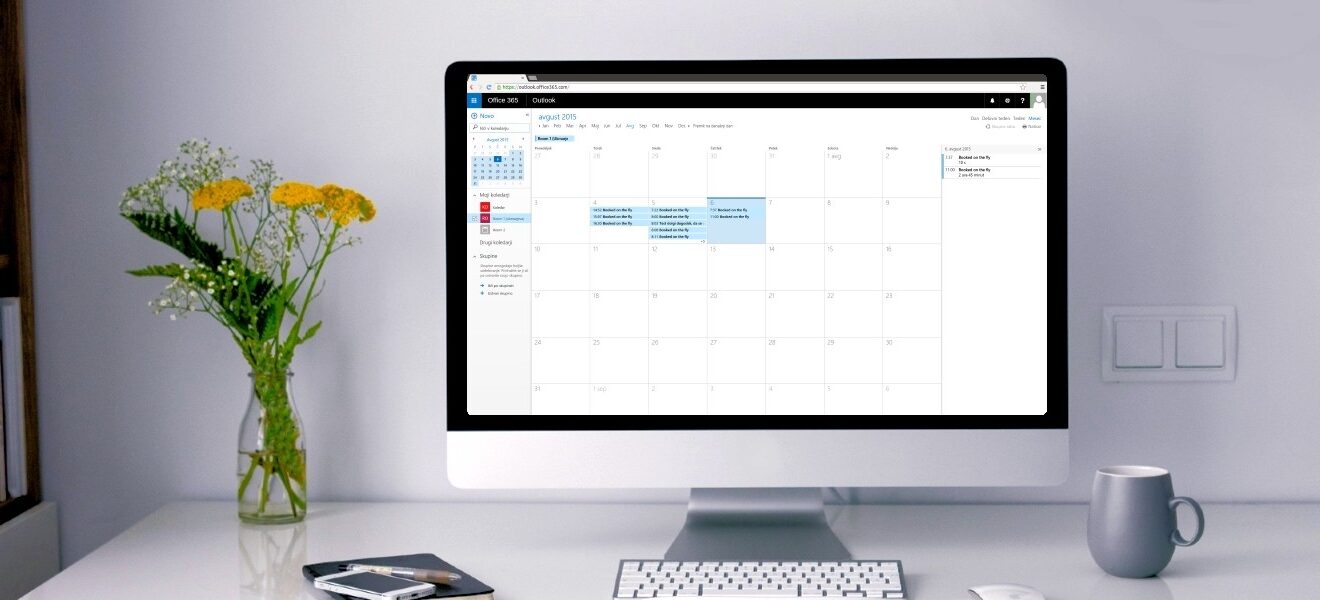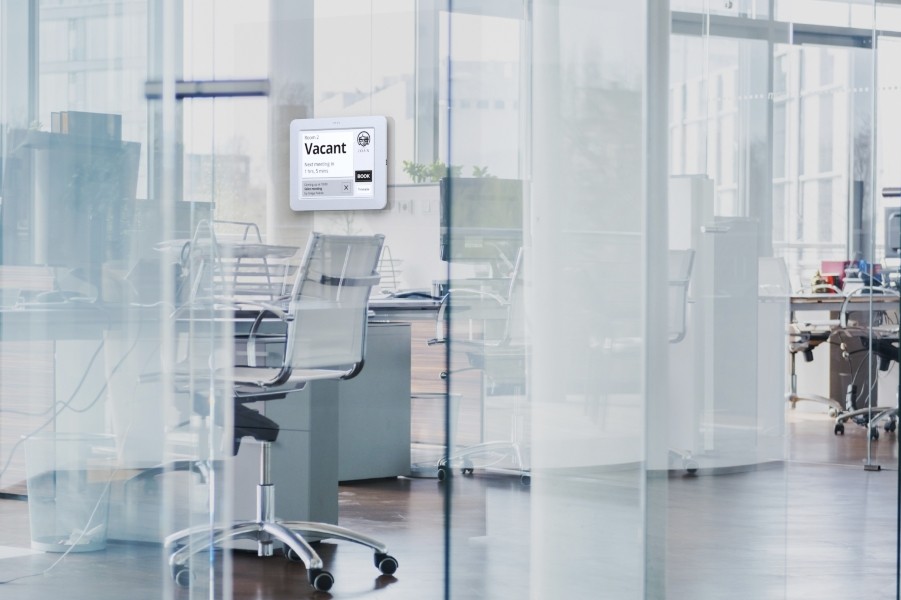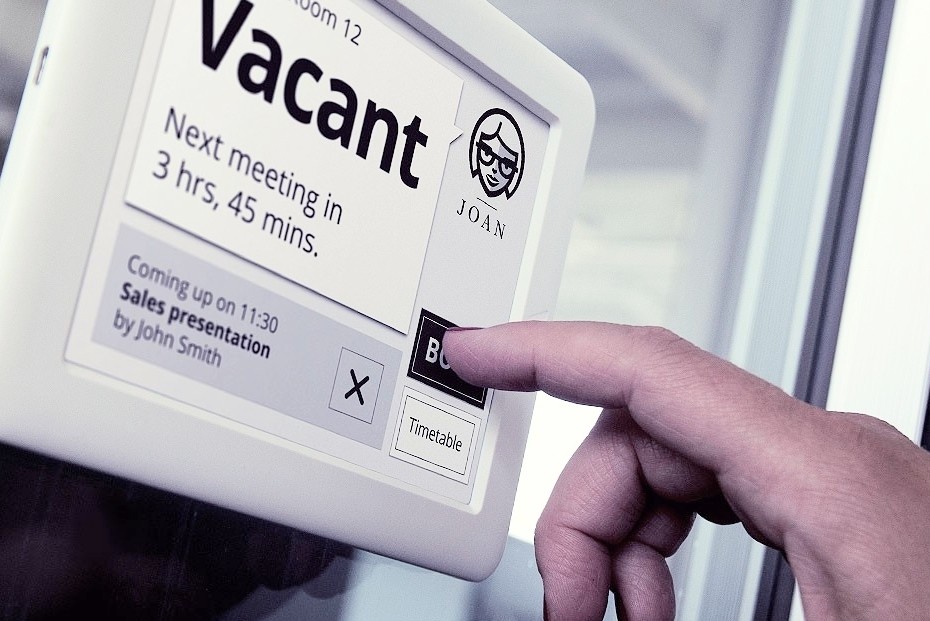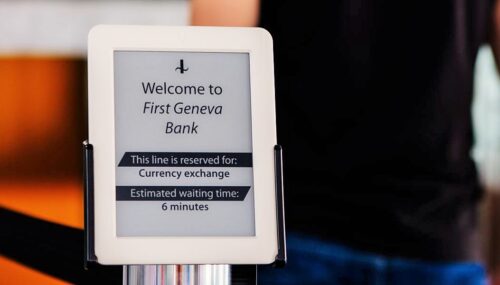

Electronic door labels for a paperless and energy saving office
Visionect, 8 Jun 2015
Creating a green workplace that features as little paper and energy wastefulness as possible is no easy task. Helping companies achieve a sustainable workplace is Joan, the energy efficient electronic door label.
Maintaining a sustainable work environment can manifest itself in many ways, but none so to the point than the effort of implementing a paperless and energy-saving office. Ticking the two boxes at the same time are eink electronic door labels which replace wasteful paper slip notifications all the while conserving power.
It’s not easy being green…
But what exactly is a green workplace? Sustainability at your place of business can mean many things, from ditching the car and cycling to work, to resource efficiency achieved through recycling office supplies and procuring local products with a low carbon footprint – all in recognition of the relationship between economy and the natural environment, acknowledging that decisions within one system may very well impact the other.
But perhaps the biggest hurdle to jump when it comes to not overtaxing the environment is the question of conserving energy and reducing paper consumption within an office setting.
CRUNCHING THE NUMBERS
Did you know for example that office equipment is the fastest growing energy user in the business world, with its consumption representing 15% of total electricity use in offices? This figure is expected to double by 2020. Even more: wasteful use of electronic office devices can mean that an energy bill of a typical office can end up costing 65% more than it would if the office was energy efficient.
American companies are likely to spend more than $120 billion a year on printing alone.
When it comes to paper consumption, the figures are just as bad: in the U.S the average office worker will use 10,000 sheets of copy paper every year, with 45% of the paper printed ending up discarded after only a day. This means that American companies are likely to spend more than $120 billion a year on printing alone.

Make your office sustainable by implementing digital solutions instead of printing everything out – starting with meeting room signs.
Door labels: letting go of paper by going the right kind of digital
With numbers like these, it is no wonder that the most common advice in implementing a green and economical workplace is to digitize. After all, the more is done online and the more reviewed on screen, the less paper is used and the more money saved.
With numbers like these, it is no wonder that the most common advice in implementing a green and economical workplace is to digitize.
When it comes to door labels and notices, this seems like a no-brainer: continuously printing and replacing cumbersome room availability and daily schedule paper notifications on doors and walls is nothing if not wasteful, in material, resources and time. After all, the greenest paper is no paper at all and going electronic, saving time and hassle by implementing a digital screen of some sort instead of a paper door notification is the way to go. Right?
Robbing Peter to pay Paul?
Yes, but not at the expense of using electricity wisely or you achieve nothing.
Aiming for paperless room labels and a lighter ecological footprint cannot mean forgetting about device energy efficiency. And many door e-labels on the market seem to do just that by encompassing screens as power-hungry as your smartphone.

An energy efficient room booking sign such as Joan you will use only 1% of the LCD power consumption.
An LCD screen for example, used on many tablets in the function of a digital room sign, will require a significant amount of power to display its content, especially if you throw in a touchscreen and take into account the frequency of use likely to occur in an office setting.
Leaving aside the issues of the electricity cables necessary for the sign to function and interfering with device installation, this high power consumption makes an LCD sign just another electrical device to add to the office power load, making it anything but efficient.
To put it in context: if 55 million conference rooms worldwide were equipped with iPad minis for room booking, this would result in about 110 Megawatts of constant energy consumption.
Saving greens with Joan
Why then not search for a better, more energy efficient solution? An electronic paper screen, for example, will use much less power than an LCD – up to 99% less.
An electronic paper screen will use much less power than an LCD – up to 99% less.
By installing an eink room booking solution such as Joan, the epaper conference room assistant, enough power can be saved to provide lighting for 2 million average households, saving approximately US$100 million in electricity bills each year.
The consequence of how electronic paper works, eink’s energy efficiency can also be put in more familiar terms: if you could apply such a dramatic increase in power saving to an automobile, it would be like running for six months on a single tank of gas.
And that’s definitely nothing to sneeze at when it comes to conserving resources and staying green.
Tags

